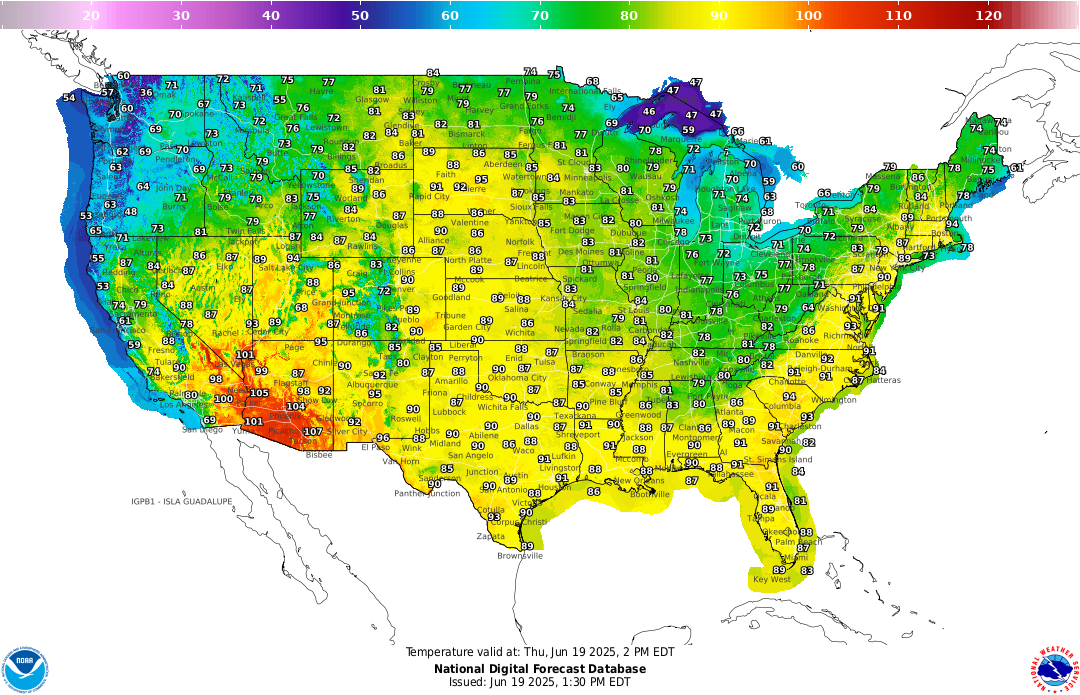It’s hot in the East. And in the Southwest. And in the Plains. And in the Midwest.
You get the idea.
As summer officially begins June 20, the National Weather Service forecast is sprinkled with words like “searing,” “stifling” and “oppressive” to describe conditions across the country — as well as “severe,” in the case of storms sparked by the heat, and warnings for even higher temperatures this weekend in some parts of the U.S.
The Southwest, Mountain West and High Plains regions are all dealing with “searing heat,” the National Weather Service said, with potentially severe thunderstorms predicted for the Eastern U.S. Severe weather is also expected in the Northern Plains, Upper Midwest and Great Lakes regions.
A line of thunderstorms were possible late Thursday in the East, with the Storm Prediction Center issuing an enhanced risk level for severe weather along the I-95 corridor, including Philadelphia, Washington, D.C., Baltimore and New York City. Damaging gusts, downpours, large hail and tornadoes are possible from Northern New England to the Carolinas.
What’s next: Even more oppressive heat
The National Weather Service said higher temperatures are expected over the weekend and into next week, with temperatures soaring into the high 90s in the East. A heat wave will expand across the Southwest, Rockies and Plains, where there are extreme heat warnings in Las Vegas and Phoenix, as well as advisories for Denver, Salt Lake City, Albuquerque and El Paso.
The weekend will bring an upper-level ridge of high pressure, ushering in “the most oppressive heat of the season to date” for “just about everyone east of the Mississippi River” into next week, the National Weather Service said. Heat indices in the Midwest could reach as high as 105-110 degrees.
Storms may affect travel
As storms bubble up across the Northeast, travel disruptions may be possible, especially in New York, Washington, D.C., Baltimore, according to AccuWeather.com. Delays due to severe thunderstorms could have a ripple effect on travel elsewhere, AccuWeather said.
Weather, illustrated and explained: 2025 may be second-warmest year on Earth, just behind 2024
This article originally appeared on USA TODAY: ‘Searing,’ ‘stifling’ heat settling in across U.S.
The post Heat settling in across the U.S. appeared first on USA TODAY.




